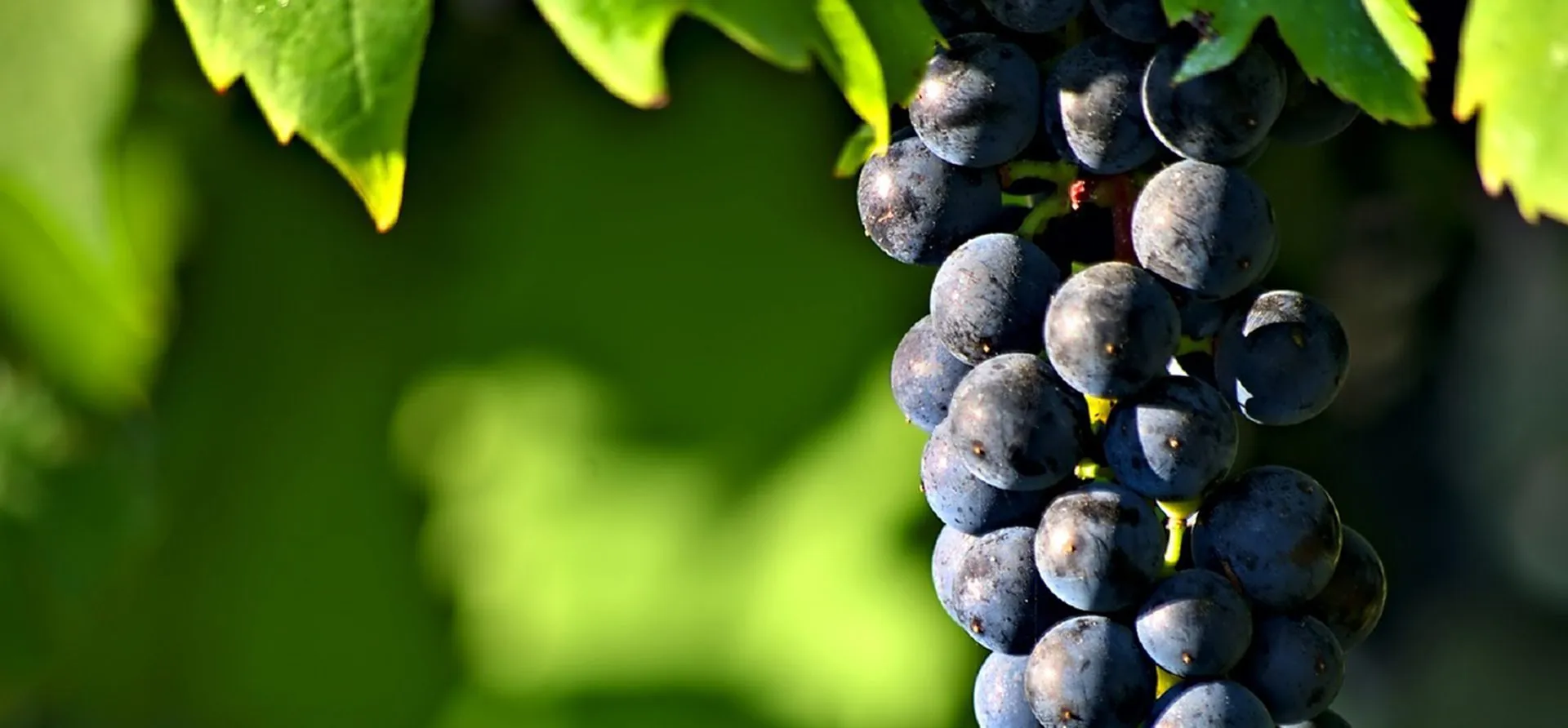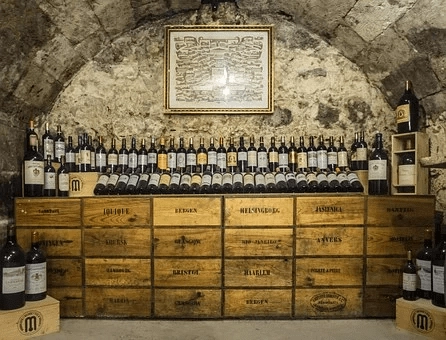At the pinnacle of modern winemaking, wine producers are now turning back to the roots, reviving autochthonous wine varieties and traditional production methods. The globalization of grapes may have lead to a temporary decline of interest in the native species, but fortunately, they were never completely forgotten. Recent discourse about the importance of terroir has brought back the attention to the varieties that have been cultivated by our ancestors. Winemakers all over the world are now once again required to make the best from the natural wealth they have at hand, and Slovenia is no exception to this trend. Below are some of the finest wine varieties that are native to our land, split according to the 3 different wine producing regions.
1. THE PODRAVJE WINE REGION
The terroir of this north-east region is characterized by rolling hills and a cooler climate, marked by dry summers and sharp winters. The vineyards have an altitude between 250 and 400 m, growing on a mixture of calcareous and clay soil, which is perfect for growing vines. The region is comprised of 2 sub-regions, Prekmurje and Štajerska, the latter ranking among the world’s top 4% wine-making areas. The wine is mostly white, with floral and fruity aromas, light body, and slightly higher acidity, which is mainly due to the cooler climate. The region is known for producing both predicate and highly drinkable everyday wines.
Ranfol
Is a typical representative of Haloze district, a remote area in east Štajerska, where wine has been made since the Roman times. This is a versatile white grape variety, normally used to make wines with slightly higher acidity level, medium to light bodied, a floral aroma and a straw yellow colour. They can either be drunk pure, as summer wines or used for different blends. Though challenging, some local winemakers have even been using Ranfol to make sparkling wine, which is unique to this particular area.
Blauer Kölner
Known locally as Žametna črnina (Black Velvet), is one of the oldest vine varieties to be cultivated in Slovenia. It’s also the variety of the world’s oldest vine, growing in Maribor (central Štajerska subregion). It’s over 400 years old and annually yields up to 55 kilos of red grapes. Each year after the celebratory harvest, the workers of the city cellar carefully produce the wine, then bottle it in a limited series of only a hundred 250 ml bottles. Naturally one must be pretty lucky to get his hands on one of these. The wine has a high acidity level and a bright red colour. Its main use is for blends, being a key ingredient of some excellent Slovenian wines, such as Cviček, Metliška črnina and Bizeljsko rdeče.
2. THE POSAVJE WINE REGION
The landscape of this south-eastern region is not as hilly as Podravje. The land is full of narrow valleys and steep slopes. The vineyards never exceed an altitude of 400 m. The soil is a mixture of Marl, sandstone, limestone, dolomite and clay. This makes for a very diverse terroir, where not two vineyards are alike. The weather conditions are continental, with influences of the cooler sub-alpine climate. Posavje is comprised of 3 sub-regions called Dolenjska, Bizeljsko-Sremič and Bela Krajina. Most of the grapevines in Posavje are red and the wines are very diverse, ranging from light red and white to high ranking predicate and sparkling wines. The most famous wine of the region, especially the Dolenjska sub-region, is called Cviček. It’ known as a worldwide speciality, for best expressing the character of his geographical origin.
Rumeni plavec
A variety of strong grapes that gives a beautifully full and fresh flavour. It’s a key ingredient of Sparkling wines, produced by the award-winning Istenič winery. The winery is also one of the first producers of sparkling wines in Slovenia. These grapes are native to the Bizeljsko-Sremič subregion. They give a green-yellow coloured wine, with high acidity and low alcohol content. Winegrowers rarely bottle it pure and usually use it for different blends, including the one to make Cviček.
3. THE PRIMORSKA WINE REGION
Located in the South-West of the Country, the vineyards of Primorska spread from as low as the sea level to an altitude of 360 m. The soil consists of flysch and limestone, forming different brown piles of earth, such as the Terra Rossa. Primorska means ‘The one by the sea’. The climate here is the Mediterranean, with hot summers and mild winters. This region is dominated by red varieties, such as Refosco, Merlot and Cabernet Sauvignon. The area produces rich and complex wines, the most notable of which is Teran. Primorska region is comprised of 4 sub-regions, Vipava Valley, Goriška Brda, Slovenska Istra and Kras (or Karst).
Zelen & Pinela
Two white varieties represent a crucial part of Vipava Valleys winemaking heritage. This subregion is currently the only known place in the world to grow them. Famous winegrower Matija Vertovec was the first to write about Zelen in his book on wine-making from 1844. The first mention of Pinela dates as far back as the year 1324. The two varieties of vines thrive best on sun-facing slopes with lower humidity. This enables the production of wines with a straw yellow colour and a greenish hue. The wines are fresh, full-bodied, with subtle floral and fruity aromas. Occasionally they will also have a hint of Mediterranean herbs (especially Zelen). Wines made from Zelen and Pinela are highly drinkable. They have a complex structure and a slightly pronounced acidity.
Vitovska grganja
A variety with a long tradition, originating in Italy and grown today also in Slovenian Karst. It’s very rare as there are only 66 hectares growing Vitovska grganja in Slovenia and Italy combined. Some believe that the name, meaning ‘the Knights Grape’, derives from the fact that these vines have very strong roots, protecting them from the powerful bora wind, that is typical for this region. Others believe that the name actually derives from the times when wine was a method of paying the knights for defending Trieste. The wine made from Vitovska grganja has a golden yellow colour and a medium body with a honey aftertaste. The aroma is floral and fruity, resembling white blossoms, peaches and grapefruit.
Rebula
Is one of the most important vine varieties in the Goriška Brda subregion, occupying over 25% of all wine-growing surfaces. Believed by many to be indigenous to Slovenia, recent research has actually shown Rebula originated from Greece. Still, we’re including it on our list, due to its historical importance in our local wine-making. Today Rebula remains popular among winegrowers, as it enables them to produce many different styles of wine. These share a few common traits, namely freshness, minerality and a high acidity level. The aroma is mostly fruity, with a hint of vanilla, and the colour straw yellow with a greenish hue. The flavour often resembles almonds. Occasionally the wine will form bubbles and is a popular base for dry sparkling wines.
This brings us to the end of our list. Though there are always a number of ongoing disputes about the true origin of each variety, all those mentioned above play an important role in our wine growing history, and have been a part of our culture for hundreds of years. All in all, we feel that bringing back the old wine varieties was and continues to be an excellent idea. Anyone who’s ever tried Zelen or Pinela would surely agree.












